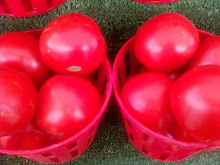 by Tom Woltjer
by Tom Woltjer

Lion's Mane Jellyfish taken at the Port Orchard marina dock.
Above photos courtesy of Tom Woltjer 08/2006
VIEW MORE OF TOM'S IMAGES
Fast Facts:
With tentacles up to three metres long and covered with stinging cells, it's better not to get too close to the Lion's Mane jellyfish. It's body can be up to 200 cm across making it one of the largest species of jellyfish.
The tentacles are arranged in eight bunches, with each bunch containing over 100 tentacles. The oldest tentacles are often coloured dark red. They have a very severe sting that can produce blisters, irritation, and muscular cramp and may even affect respiratory and heart function. Fragments of tentacles, left on buoy ropes for example, retain their stinging power.
This species does occasionally occur in large swarms, largely thought to be due to storms and tides that concentrate individuals together. They are predators, eating zooplankton, small fish and moon jellyfish.
You'll find the Lion's Mane in the cold Arctic and Pacific Oceans, the North and Irish Seas and around the coast of Australia. They are mostly no deeper than around 20 metres.











